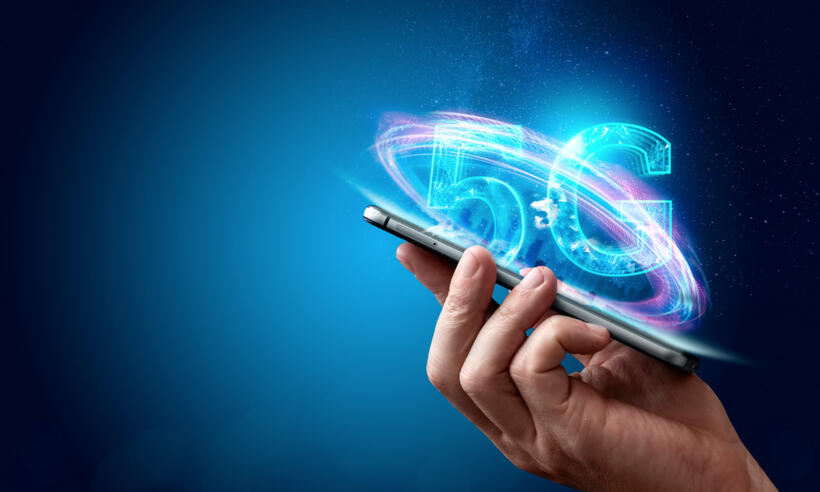
5G-powered future of OTT entertainment and advertising: What is on the horizon?
The boom in smart-home technology plays a decisive role in the growth of “connectivity craving” — consumer demand for fast, safe, and consistent access to content wherever and whenever users want it. With 5G looming on the horizon, connectivity and content consumption seem to be moving to the next level.
Initially, an increase in population and the growing number of mobile devices is becoming the force rapidly driving the adoption of 5G. Ericsson reports that we’ll see a 5x increase in mobile data traffic by the end of 2025. Along with ensuring the support of numerous devices, 5G is expected to address the issues which users face when interacting with digital content.
This is particularly relevant for viewing video content on the go, where 5G promises to enhance content transfer, make it smoother and continuous, as well as eliminate latency. Add to that 5G’s potential to bring better connectivity into people’s homes, which apparently will drive consumers to adopt 5G more eagerly.
Another large area where 5G will bring transformation and new capabilities is the OTT environment. As of now, 80% of U.S. homes have at least one connected TV device, and this figure keeps growing.
Plus, total viewership time has increased significantly in recent years: now, U.S. viewers consume OTT content for about 4 billion hours altogether per week. While the OTT/CTV environment has already experienced snowballing growth on many fronts, 5G will bring even more essential opportunities to it, including advertising-related ones.
Impact on the OTT industry
The faster and better next generation connection will foster technological advancement across a number of application domains within the entertainment industry: from VR video for sports and music on HMD and phones, to multi-game streaming, and interacting with the content through OTT platforms, where, apparently, we’ll see the immediate impact of 5G.
For starters, anyone with a 5G connection will have the ability to become a content producer without huge investments in high bandwidth communications equipment. Video content creators will be able to access their audiences with higher quality than ever before.
Also, 5G’s speed and capabilities will open up a whole new world for advertisers. Namely, it’s expected to cut ad latency down to roughly 1 millisecond and enable advertisers to display their ads in front of potential customers almost instantly, indicating the end of buffering while streaming content.
One of the most notable changes the 5G network brings to the OTT industry is Fixed Wireless Access-based video transmission. Other possible improvements would be extending video delivery and bringing high-quality video to the biggest screens in households. As the number of those big screens increase in proportion to the expanding viewership, the demand for OTT campaigns will also grow.
Besides, increased bandwidth availability and reliability will make it possible to watch videos in full HD and even 4K-8K streaming on a tablet or smartphone while on a bus, train, or on-the-go anywhere else.
Getting prepared for the transformation
And yet, the positive impact of 5G won’t come instantaneously. It will require some time before we see the real effects of 5G once it’s adopted across the globe. Besides, while everything is fine with 5G’s promises of faster speed, better coverage, and unprecedented content quality across screens, there is also a sensitive area requiring strengthening: privacy.
Viewers seek better privacy and security for their devices just as much as they want more control over content accessibility. The current state of user privacy, however, shows there’s still work to do towards eliminating any loopholes that could let bad cyber actors access users’ devices through unsecured TVs.
Evidently, privacy should be on the top of the agenda for everyone involved in the 5G ecosystem, be it a telco, OTT streaming platform, content producer, or an advertiser.
Along with the need to address privacy concerns, there are other essentials to embrace today in order to be 5G-compatible tomorrow. Precisely, major media industry players are testing the waters of new production technologies and media formats, exploring the limits of multicasting, and seeking opportunities to create more accurate targeting models based on data inputs spawned by 5G.
What comes next
At this stage, it’s too early to make accurate forecasts regarding the state of internet TV once 5G gets deployed in its full capacity. However, there’s every reason to believe that 5G will continue to lure viewers into streaming, making it the primary source of video content consumption.
Hence, OTT/CTV seems to be one of the areas that will benefit from the implementation of 5G the most as it brings improved data streaming speed, reliability, and extended video delivery capabilities. There’s no better time than now to move towards more robust digital solutions and get prepared before 5G comes into force.
This content was originally published on ClickZ

